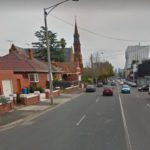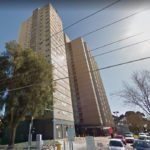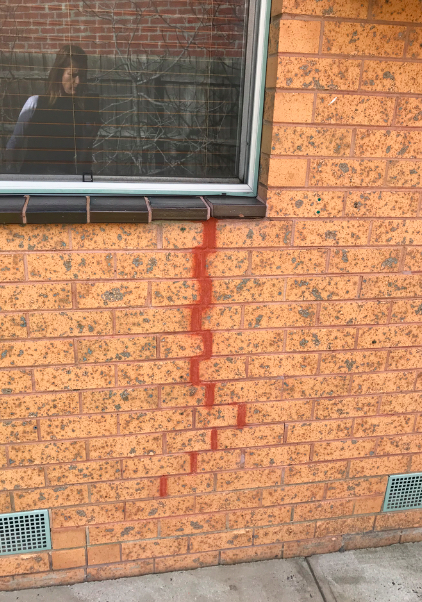When searching and shortlisting for property in a familiar area, our strike rate for spotting an investment-grade property on the internet is around 25%. Out of a possible hundred properties, we can filter the off-the-plan options out, recognise main roads and reject them, spot a busy neighbouring allotment and skip past, recall a less desirable street, steer clear of commission housing towers…. the list goes on, and we may only shortlist 4 properties to see.
Even with the benefit of Google Streetview, Google Earth, land portals, government sites and local agents to lean on for intel, there are many aspects that the internet can’t tell us.
Our shortlisted four will then be added to my inspection list and we’ll arrange to view the properties.
Based on this 25% strike rate, it’s likely that we could uncover just one contender.
In a lucky week we may find that two or three make the grade, but in an unlucky week the inspections could all be fruitless.
What is really helpful is the ability (and familiarity) to spot a red flag.
Red flags, when spotted on line or identified after discussing with local agents can save a buyer (and a buyer’s advocate) a lot of time (and often money). They come in all shapes and forms, and make the difference between driving across town, wasting money on building inspections, and running due diligence on something that is unsuitable to start with. To name just a few…..
 Main road addresses often excite buyers because the listed property price will reflect the disadvantaged location. For buyers who are aspiring to secure a property that is typically priced above their budget in a given area, a main road address could be their ticket for entry into that postcode due to the relative discount on offer. For investors, we steer them clear from such compromises because they can never change this flaw.
Main road addresses often excite buyers because the listed property price will reflect the disadvantaged location. For buyers who are aspiring to secure a property that is typically priced above their budget in a given area, a main road address could be their ticket for entry into that postcode due to the relative discount on offer. For investors, we steer them clear from such compromises because they can never change this flaw.
For home-buyers, we ask them three questions:
- Can you live with the road noise?
- Can you safely pull into your drive, and can you easily drive out?
- If you buy a bargain, one day you’ll sell a bargain. Are you OK with this?
It’s a compromise that some choose to take on, and armed with these three answers to the questions above, we can support their decision if their eagerness to buy into that postcode at a discount overrides their concerns.
 An invisible red flag can be identified with a quick zoning check on a land portal. Banks often reject zoning types that are outside of the policy conditions for a residential purchase. Examples include Commercial, Industrial and Rural zoning. While it’s not obvious on a property listing all the time, as professionals we can recognise the hints and check for this red flag long before we’ve gone down the Due Diligence path and had a solicitor spot it in their contract review. A hint on a commercial dwelling may be proximity or position on/above shops. It could be a busy high street location.
An invisible red flag can be identified with a quick zoning check on a land portal. Banks often reject zoning types that are outside of the policy conditions for a residential purchase. Examples include Commercial, Industrial and Rural zoning. While it’s not obvious on a property listing all the time, as professionals we can recognise the hints and check for this red flag long before we’ve gone down the Due Diligence path and had a solicitor spot it in their contract review. A hint on a commercial dwelling may be proximity or position on/above shops. It could be a busy high street location.
Hints on industrial zoning aren’t always obvious, but then again, in some suburbs they are, as seen in this google search view directly opposite a house that arguably sold for some 40% below market value for an equivalent dwelling in leafy, residential street a few hundred metres further west.
 Many of our red flags aren’t so easy to spot on Google Streetview because resolution is often patchy as you zoom in. Identifying DHS housing can be done when we drive to the property, but unless it’s an obvious high rise tower or large low rise that is identifiable on Streetview, we may find that our shortlisted option is ruled out when we inspect in person.
Many of our red flags aren’t so easy to spot on Google Streetview because resolution is often patchy as you zoom in. Identifying DHS housing can be done when we drive to the property, but unless it’s an obvious high rise tower or large low rise that is identifiable on Streetview, we may find that our shortlisted option is ruled out when we inspect in person.
Bad neighbours, noisy households and the general feeling of ‘unsafe environment’ are sometimes impossible to detect on a portal.
There are hints however.

 Tyre marks on residential streets, sneakers hanging on powerlines, neighbouring houses with long grass and defective cars out the front in number… these are all signs of a less-than-pleasant neighbourhood.
Tyre marks on residential streets, sneakers hanging on powerlines, neighbouring houses with long grass and defective cars out the front in number… these are all signs of a less-than-pleasant neighbourhood.
T he physical red flags however – they require a special eye and a curious inspection. They may range from ‘cover-ups’ by owners to hide significant building issues to old brown bakelite light switches, switchboards without upgraded safety switches, damp smells, rising damp blistering, nasty cracking in external bricks, bouncy flooring,.. the list goes on.
he physical red flags however – they require a special eye and a curious inspection. They may range from ‘cover-ups’ by owners to hide significant building issues to old brown bakelite light switches, switchboards without upgraded safety switches, damp smells, rising damp blistering, nasty cracking in external bricks, bouncy flooring,.. the list goes on.
Correcting an unlevel floor can range from a $3,000 to $200,000 spend in some cases.
 Reblocking or underpinning (correcting brick walls and foundations) is generally far more costly than restumping a timber house, particularly if chocking or localised stump replacement is an option. A qualified building inspector will shed light on the options to fix, but it is fair to say that we avoid any brick apartment blocks that have engineers reports, mentions of special levies and the requirement for underpinning.
Reblocking or underpinning (correcting brick walls and foundations) is generally far more costly than restumping a timber house, particularly if chocking or localised stump replacement is an option. A qualified building inspector will shed light on the options to fix, but it is fair to say that we avoid any brick apartment blocks that have engineers reports, mentions of special levies and the requirement for underpinning.
Some of the interesting red flags lean on a high level understanding of the planning initiatives and infrastructure changes taking place in a given area. Being domiciled in Melbourne’s inner-west is exciting for us, but also shines a spotlight on the need for us to be familiar with all that is happening around Melbourne right now (and potentially in the future). We have our Western Distributor Tunnel underway and the giant drills, road closures and turquoise signage from Laverton to the Westgate Bridge is a constant reminder of what our Labour Government is up to. Recognising the Yarraville and Footscray pockets that will be impacted by the tunnel project is essential, even if it’s just a case of construction noise for another three years. Our Metro Tunnel project for rail commuters around Melbourne is another case in point, and the recently-axed East West Link comes to mind when we consider the flurry of sales of period housing around Collingwood four years ago when our inner-north residents were faced with neighbouring compulsory acquisitions and the threat of sound barriers, construction noise and change to their local landscape. Recognising that this project may well come back onto the discussion table, particularly with a change of government, is prudent.
Searching carefully, asking important questions and ‘doing a Streetview driveway’ save us a lot of miles and wasted hours.
REGISTER TO OUR NEWSLETTER
INFORMATION
CONTACT US
1A/58 ANDERSON STREET,
YARRAVILLE VIC 3013
0422 638 362
03 7000 6026
CATE@CATEBAKOS.COM.AU
